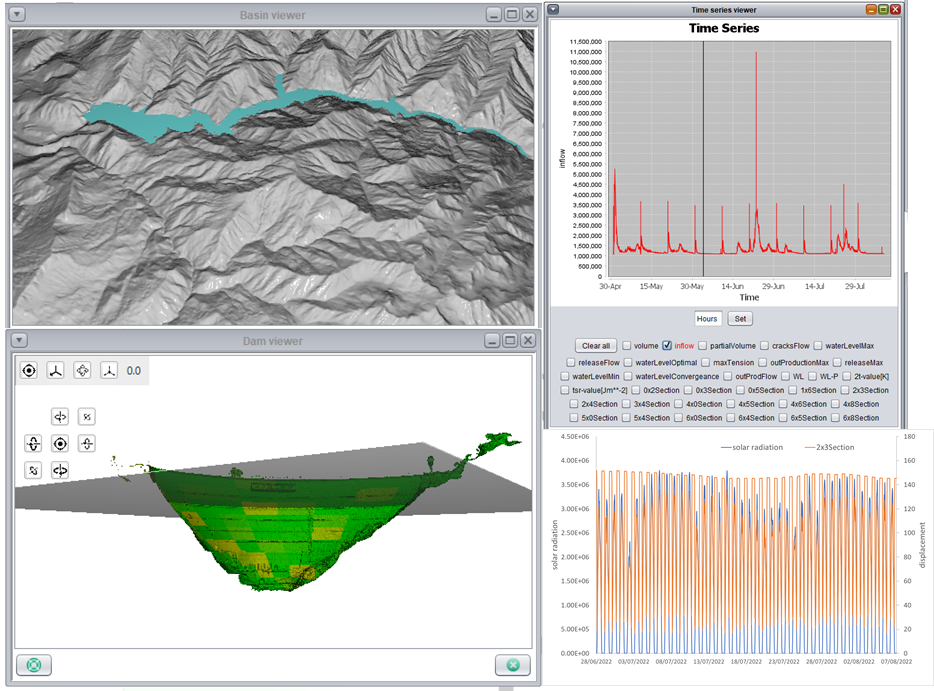Analysis of the impact of possible hydrological extremes on large dams
The DAMAST Transfer Workshop, organized by the RESIS (Resilient and Smart Infrastructure Systems) department and held at Tbilisi State University (TSU) from 25 to 27 September, brought together 18 participants from various fields, including representatives from Engurhesi, UNDP Armenia and universities such as GTU, TSU and KIT. The central theme of the workshop was resilience and sustainability, with a particular focus on AI-based early warning systems for dam safety.
One of the main highlights of the workshop was the presentation of a first version of a scientific analysis system. While this system is structurally similar to an early warning system, it is primarily tailored to studying the stability of dams and developing appropriate measures in advance of extreme weather events. Extreme events, which may be exacerbated by climate change and (induced) seismic activity, have underlined the urgency of developing effective analysis and forecasting tools.
The analysis system presented at the workshop was based on a combination of artificial intelligence (AI) and hydrological models. The participants engaged in a lively discussion about the application of AI in the interpretation of extensive measurement data covering environmental factors, seismicity and dam deformation. It became clear that the use of AI is a promising way to gain both qualitative and quantitative insights into the complex interactions between these variables.
Research from RESIS highlights that while AI is powerful, it also has its limitations, particularly when it comes to comprehensively understanding the impact of extreme events beyond the scope of measured data. To address this challenge, the workshop emphasized the importance of integrating AI-based methods with robust physical models. This fusion of approaches led to the development of hybrid systems that can provide more reliable predictions - a crucial aspect in the context of early warning systems.
Based on the knowledge gained through RESIS, several recommendations were made. Foremost among these recommendations was the proposal to accompany new dam projects with the development of digital twins. These digital replicas would enable robust short-term risk predictions and early warnings, ensuring the safe and resilient operation of dams and reducing disaster risk.
In addition, digital twins were seen as essential for assessing future "what-if" scenarios, particularly those involving multiple extreme events due to factors such as climate change and seismic activity, in order to take mitigative action. The ability to simulate and analyze such scenarios in a controlled digital environment was seen as essential for proactive resilience management and strategic decision making.

Associated institute at KIT: Institute for Thermal Energy Technology and Safety (ITES) | Department Resiliente Resilient and Smart Infrastructure Systems (RESIS)
Author: Sadeeb Simon Ottenburger (April 2024)

